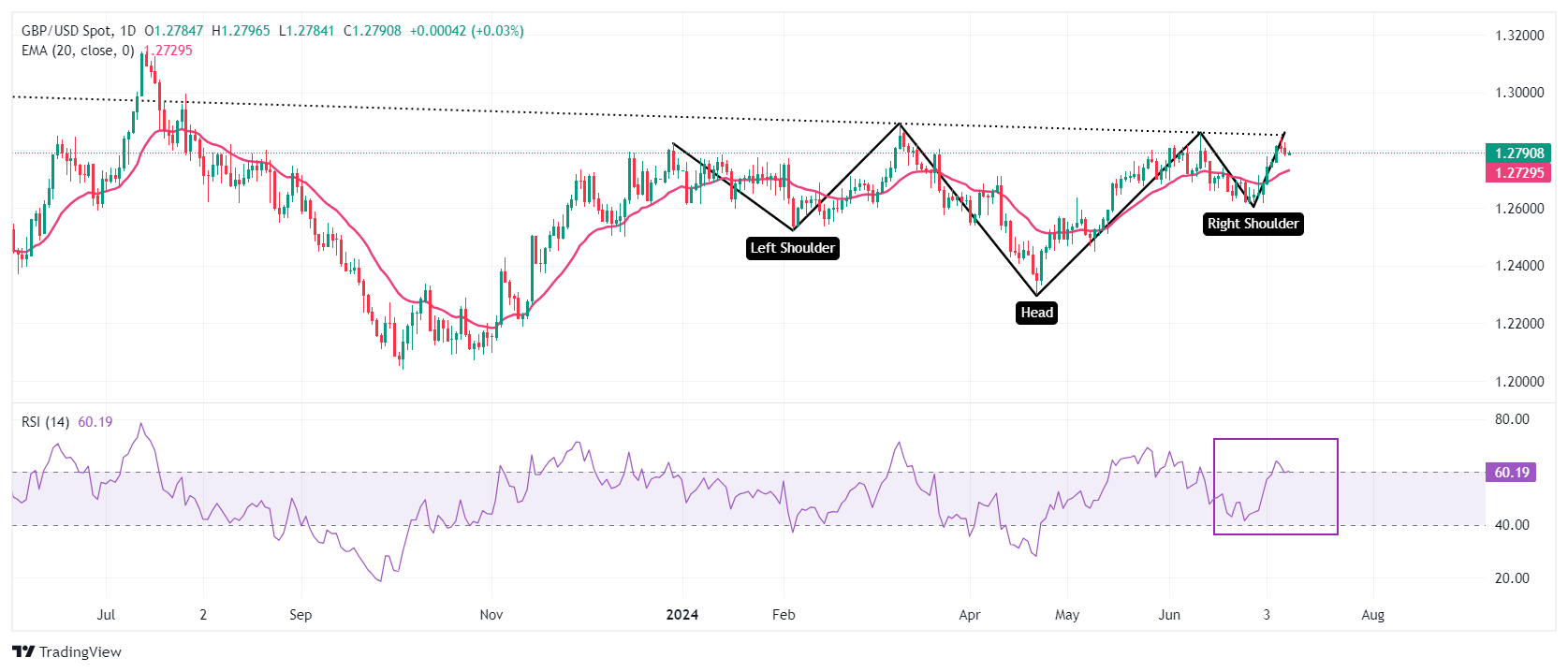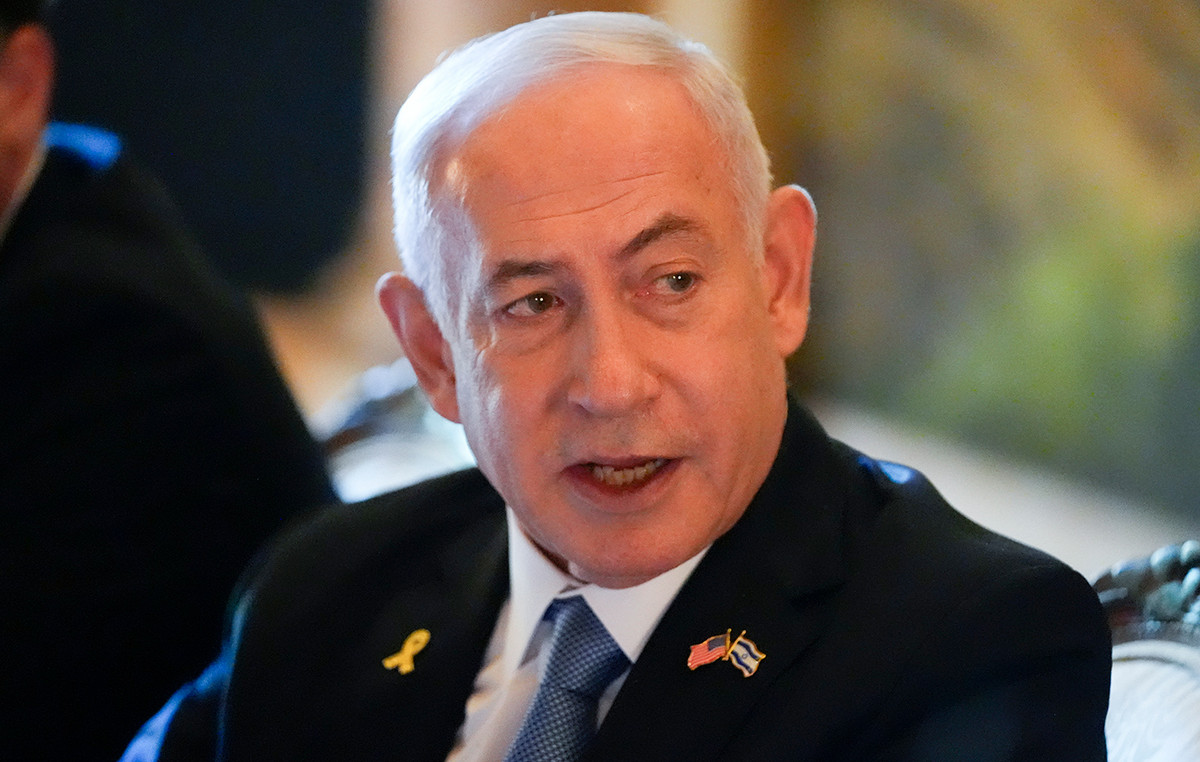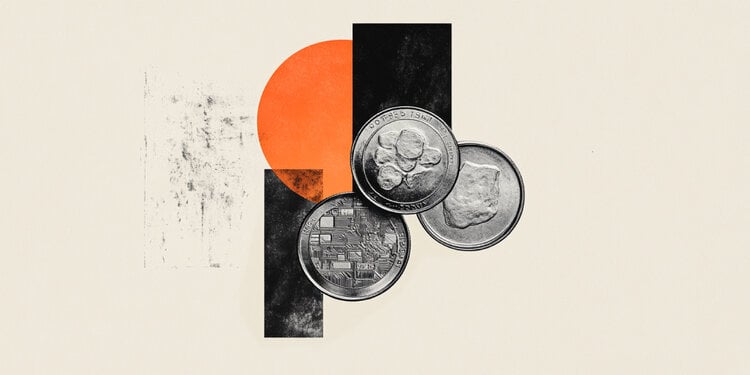- Pound shows strength against US dollar as Fed’s Powell sees weakness in US labor market strength
- The Fed chief did not outline any specific rate-cutting path.
- UK GDP for May and US inflation for June are now in focus.
The British Pound (GBP) is up against the US Dollar (USD) in early London trading on Wednesday after a minor correction from near a four-week high of 1.2850 this week. The overall appeal of the GBP/USD pair remains firm amid strong speculation that the Federal Reserve (Fed) will start cutting interest rates during the September meeting.
The odds of the Fed pivoting toward policy normalization remain strong even though Fed Chair Jerome Powell reiterated in his semiannual testimony before Congress on Tuesday that he refrained from providing a specific rate-cut path for this year. Powell argued in favor of keeping interest rates at their current levels for longer until they get evidence that inflation will return to the desired 2% rate.
What was unexpected about the Fed’s Powell’s comment to Congress was his acknowledgement that the U.S. economy is no longer overheated, with labor market conditions cooling. Powell said the labor market has moderated to where it was before the pandemic era.
Now that risks have turned two-way, a rate-cutting move by the Fed in September appears to be a fait accompli. For clarity, investors will focus on the US Consumer Price Index (CPI) report for June, due on Thursday. The report is expected to show that core inflation, which excludes the volatile food and energy items, grew steadily by 0.2% and 3.4% on a monthly and annual basis, respectively. Annual headline inflation is estimated to have slowed to 3.1% from May’s reading of 3.3%, while the monthly figure is expected to have barely grown after remaining unchanged.
A scenario in which price pressures remain persistent or elevated would ease expectations of rate cuts in September. On the contrary, soft figures would boost them.
Daily Market Movers Roundup: Sterling holds firm with UK GDP in focus
- The British Pound is performing strongly against its major peers due to multiple tailwinds. The British currency is strengthening as the outright victory of the Keir Starmer-led UK Labour Party in the parliamentary elections against the Rishi Sunak-led Conservative Party has brought political stability to the economy. Uncertainty over the Bank of England (BoE) rate cut trajectory has deepened following BoE policymaker Jonathan Haskel’s hawkish guidance.
- On Monday, Jonathan Haskel, who has been one of the leading hawks, said no to a rate cut in August as inflation in the labor market remains high due to strong wage growth. Haskel said, “I would prefer to hold rates until there is more certainty that underlying inflation pressures have declined sustainably,” Reuters reported.
- In contrast, financial markets currently expect the BoE to start cutting its key rates as early as the August meeting. Expectations for BoE rate cuts in August have been boosted by the return of annual headline inflation to the bank’s 2% target.
- Meanwhile, investors are shifting their focus to monthly Gross Domestic Product (GDP) and factory data for May, due out on Thursday. Economists expect the economy to have grown 0.2% after remaining unchanged in April. Industrial and Manufacturing Production is expected to have grown on a monthly and annual basis after declining in April.
Technical Analysis: British Pound Looking to Hold 1.2800
The British Pound is looking to hold the key figure of 1.2800 against the US Dollar. The GBP/USD pair is gaining strength for a decisive breakout of the inverted Head-and-Shoulders (H&S) chart formation on a daily time frame whose neckline is drawn near 1.2850. A breakout of the H&S formation results in a bullish reversal.
The upsloping 20-day exponential moving average (EMA) near 1.2730 suggests that the short-term trend is bullish.
The 14-day Relative Strength Index (RSI) is moving up into the bullish range of 60.00-80.00. A sustained move above it will keep the momentum going higher.
The British Pound FAQs
The Pound Sterling (GBP) is the oldest currency in the world (886 AD) and the official currency of the United Kingdom. It is the fourth most traded currency unit in the world, accounting for 12% of all transactions and an average of $630 billion a day, as of 2022.
Its key currency pairs are GBP/USD, also known as the “Cable,” which accounts for 11% of the forex market, GBP/JPY, or the “Dragon” as it is known to traders (3%), and EUR/GBP (2%). The British Pound is issued by the Bank of England (BoE).
The most important factor influencing the value of the British Pound is the monetary policy decided by the Bank of England. The Bank of England bases its decisions on achieving its main objective of “price stability”, i.e. a stable inflation rate of around 2%. Its main tool for achieving this is the adjustment of interest rates.
When inflation is too high, the Bank of England tries to contain it by raising interest rates, making credit more expensive for individuals and businesses. This is generally positive for the GBP, as higher interest rates make the UK a more attractive place for global investors to park their money.
When inflation is too low, it is a sign that economic growth is slowing. In this scenario, the BoE will consider lowering interest rates to make credit cheaper, so that companies borrow more to invest in growth-generating projects.
The data released gauges the health of the economy and can influence the value of the Pound. Indicators such as GDP, manufacturing and services PMIs, and employment can influence the direction of the Pound.
A strong economy is good for the British Pound. Not only does it attract more foreign investment, but it may encourage the Bank of England to raise interest rates, which will directly strengthen the British Pound. Conversely, if economic data is weak, the British Pound is likely to fall.
Another significant indicator for the pound is the trade balance. This indicator measures the difference between what a country earns from its exports and what it spends on imports during a given period.
If a country produces highly sought-after exports, its currency will benefit exclusively from the additional demand created by foreign buyers who wish to purchase these goods. Therefore, a positive net trade balance strengthens a currency and vice versa for a negative balance.
Source: Fx Street
I am Joshua Winder, a senior-level journalist and editor at World Stock Market. I specialize in covering news related to the stock market and economic trends. With more than 8 years of experience in this field, I have become an expert in financial reporting.








